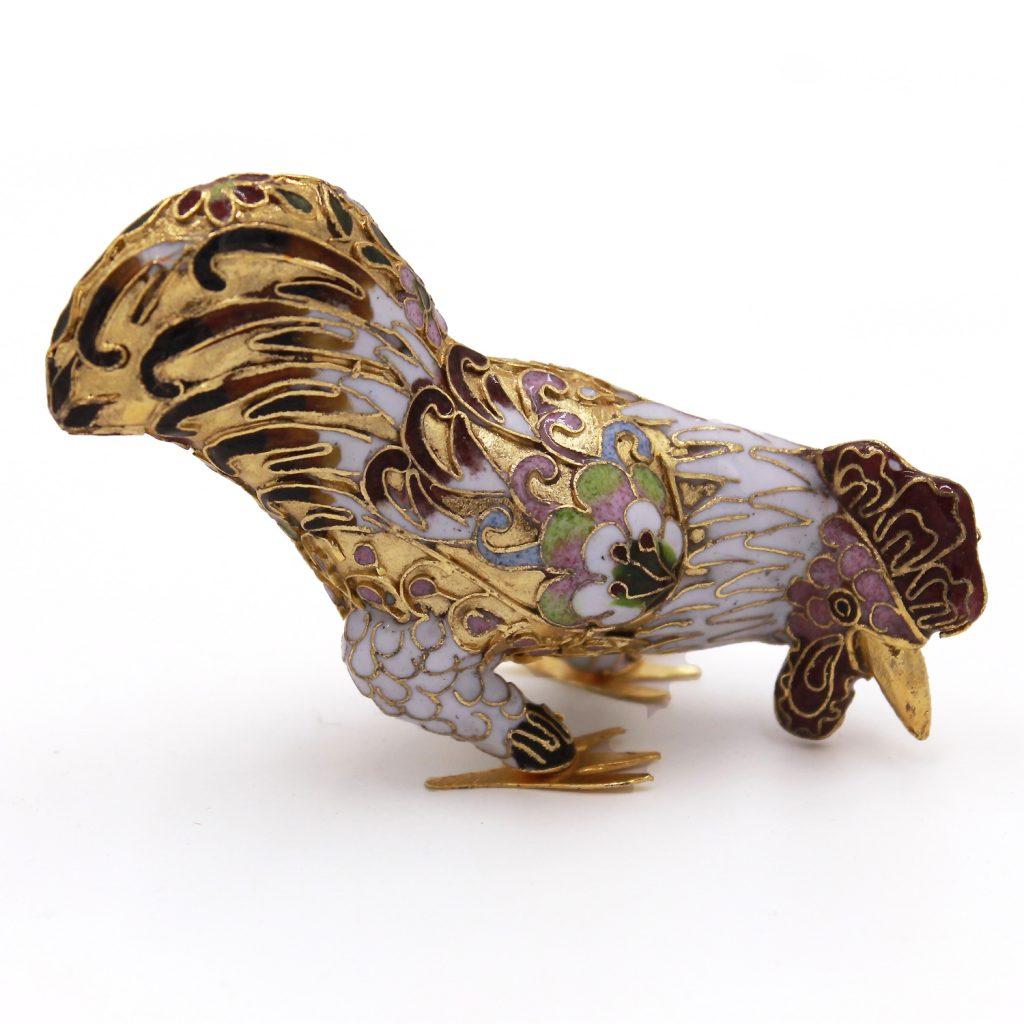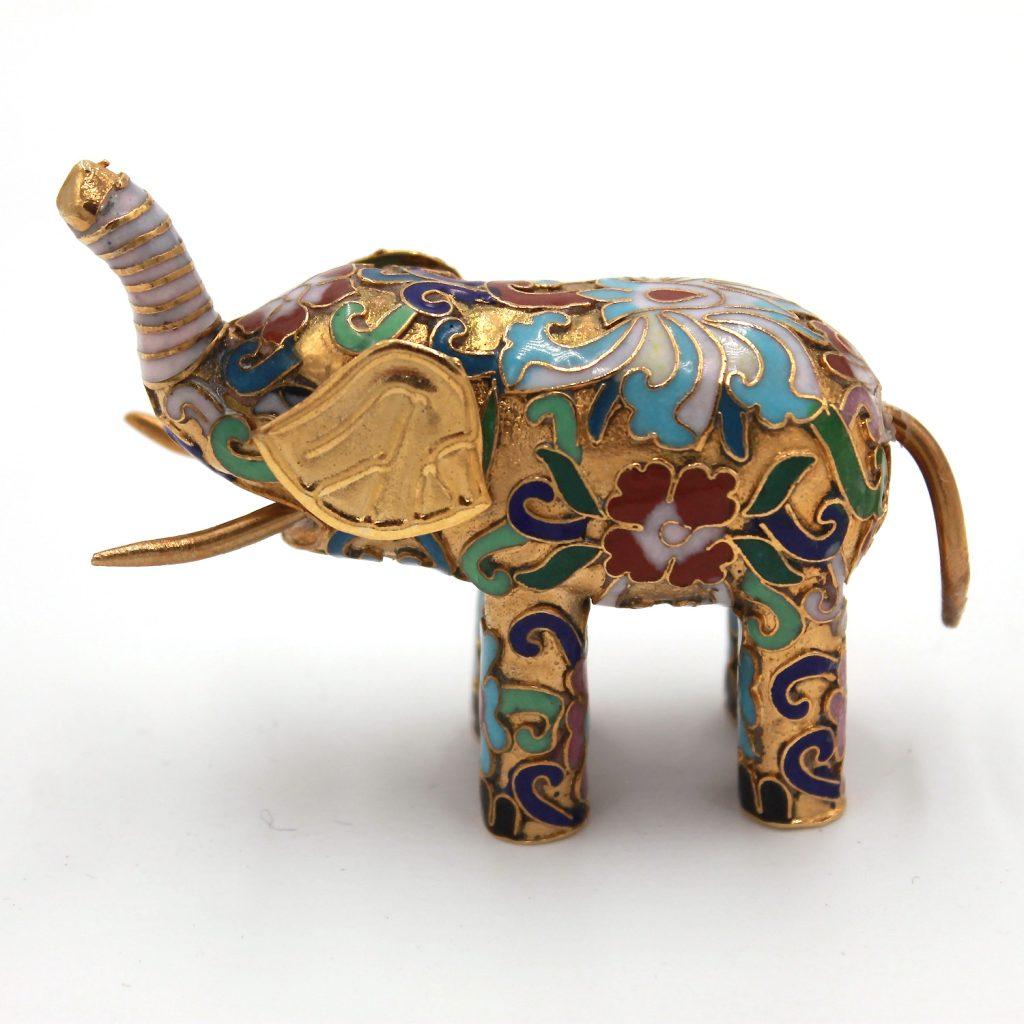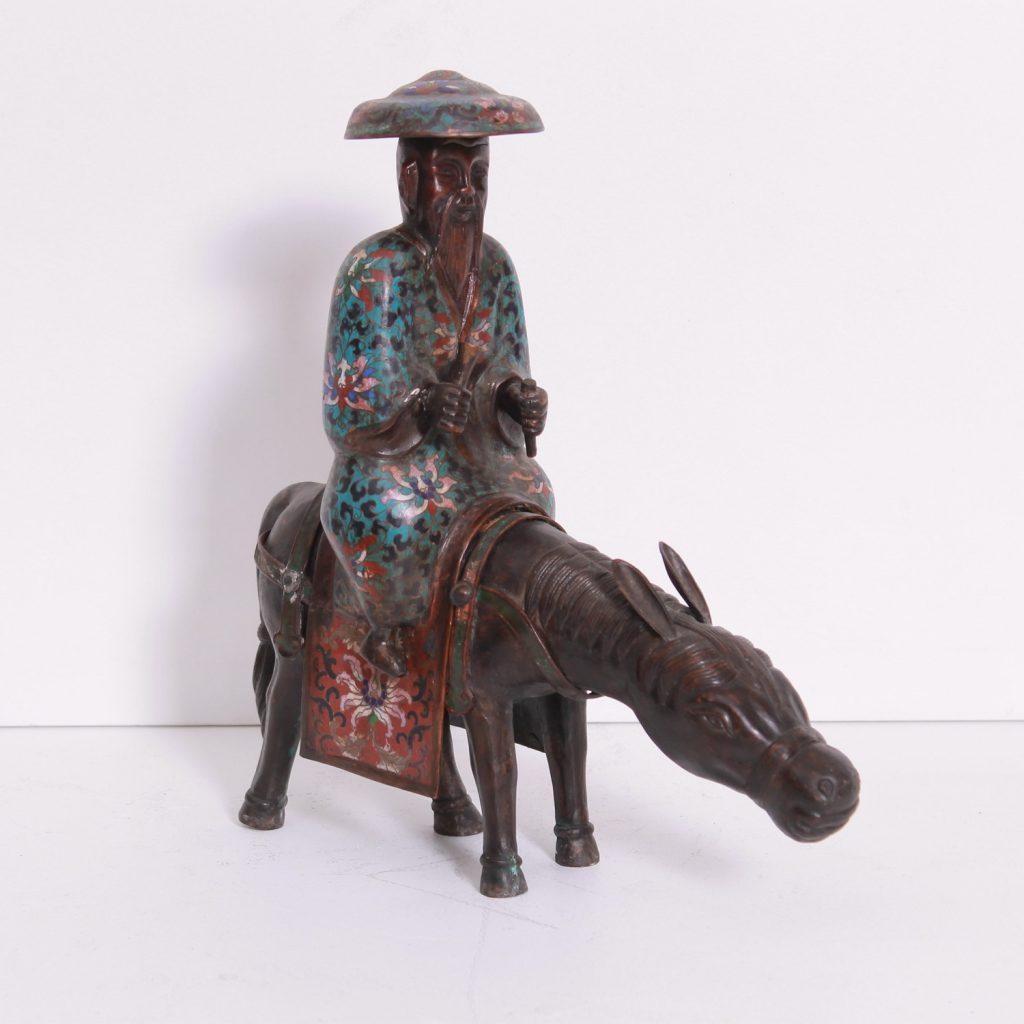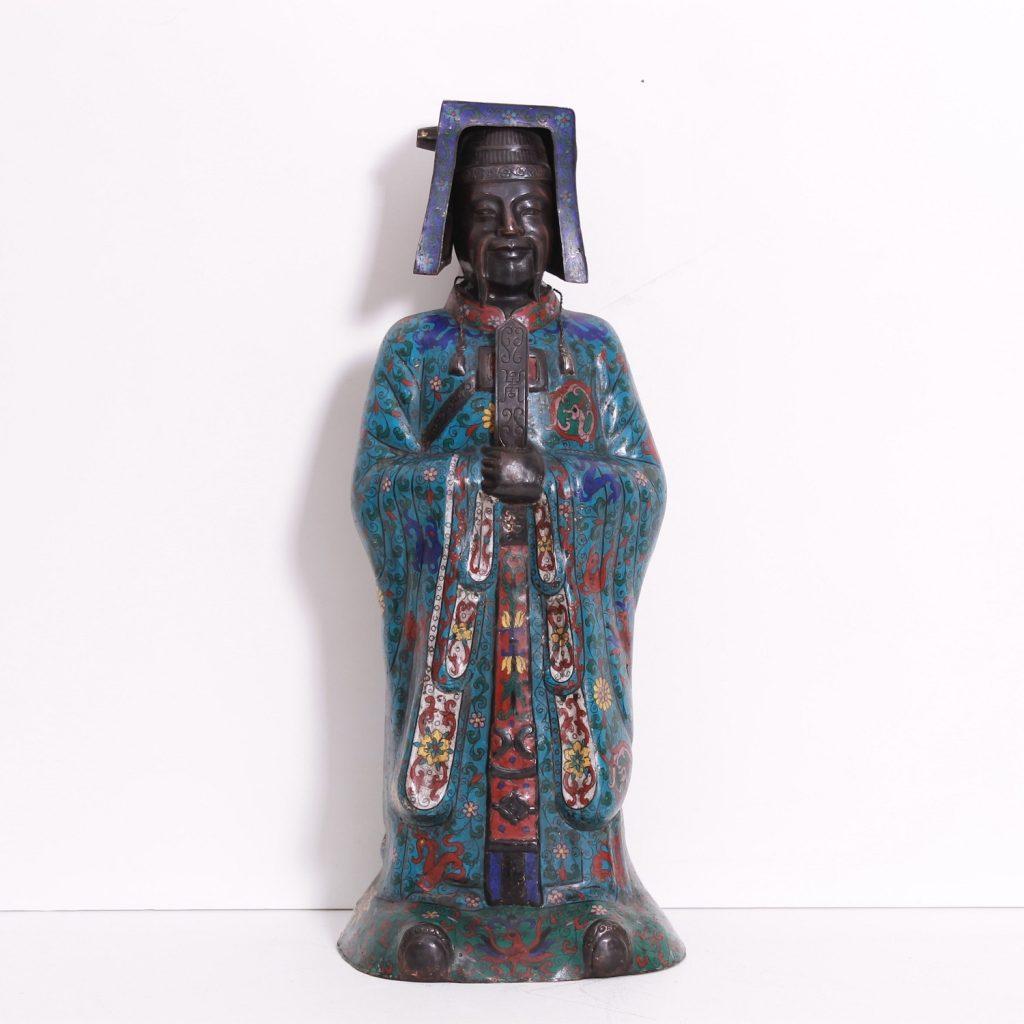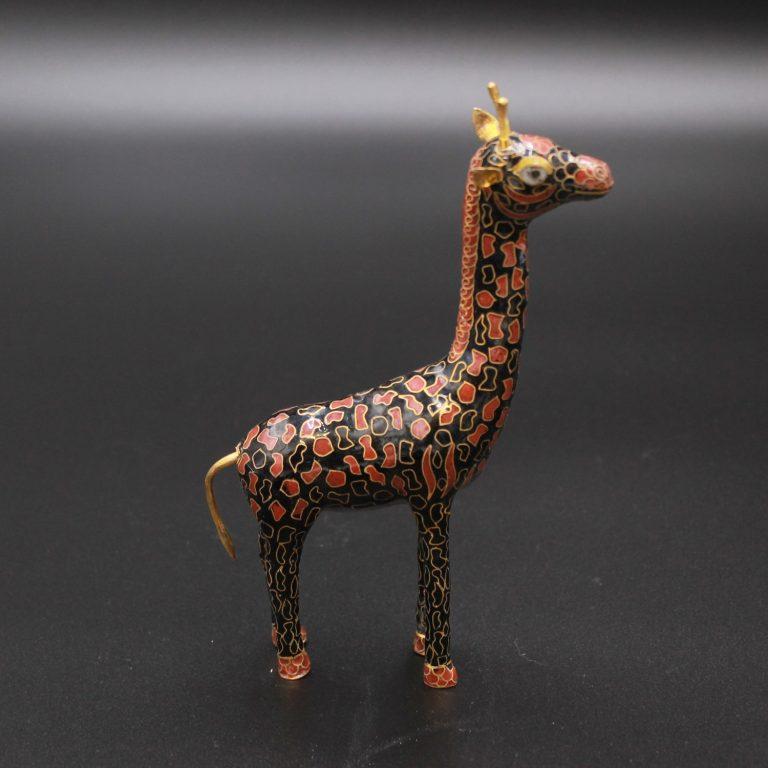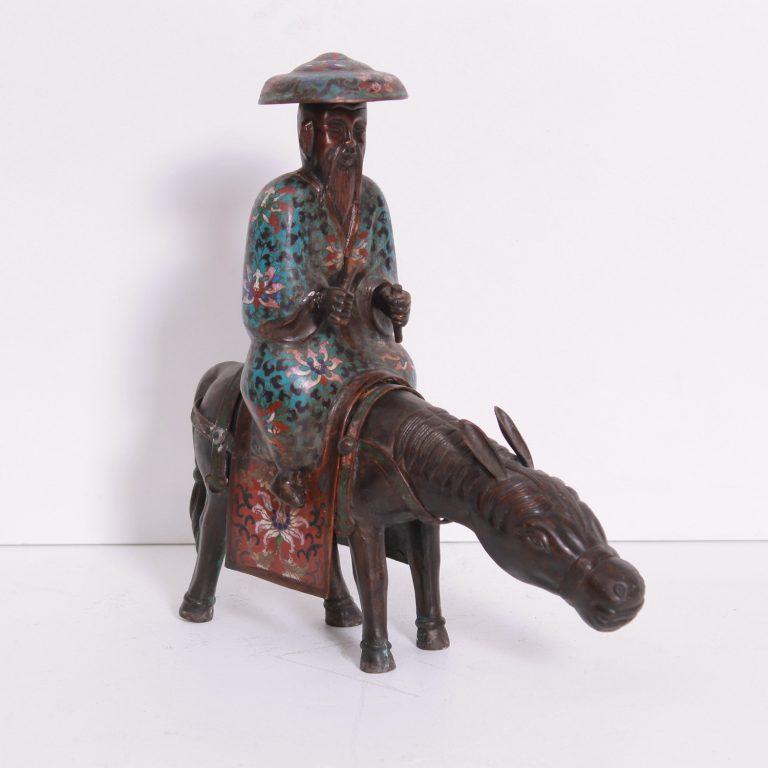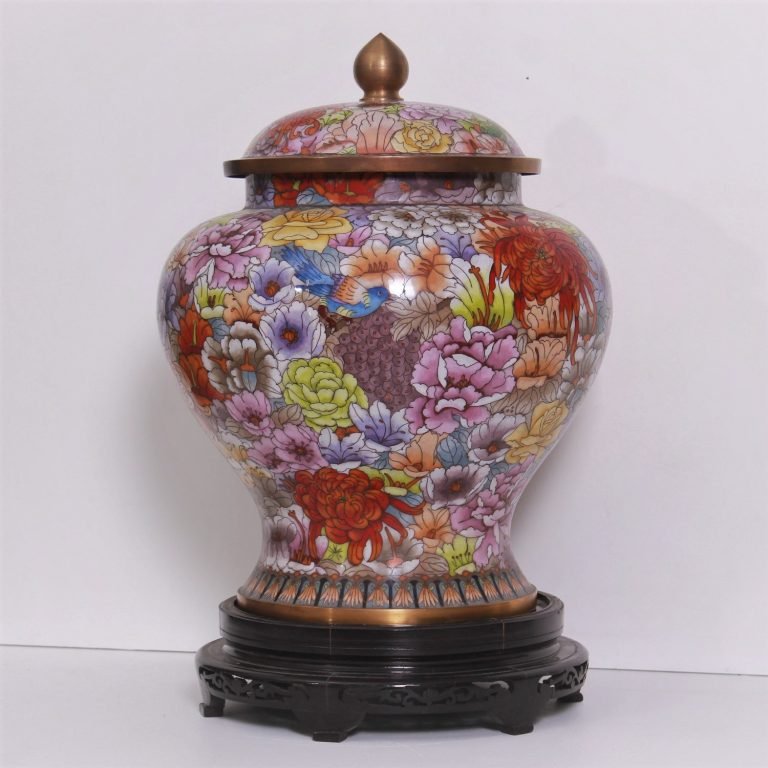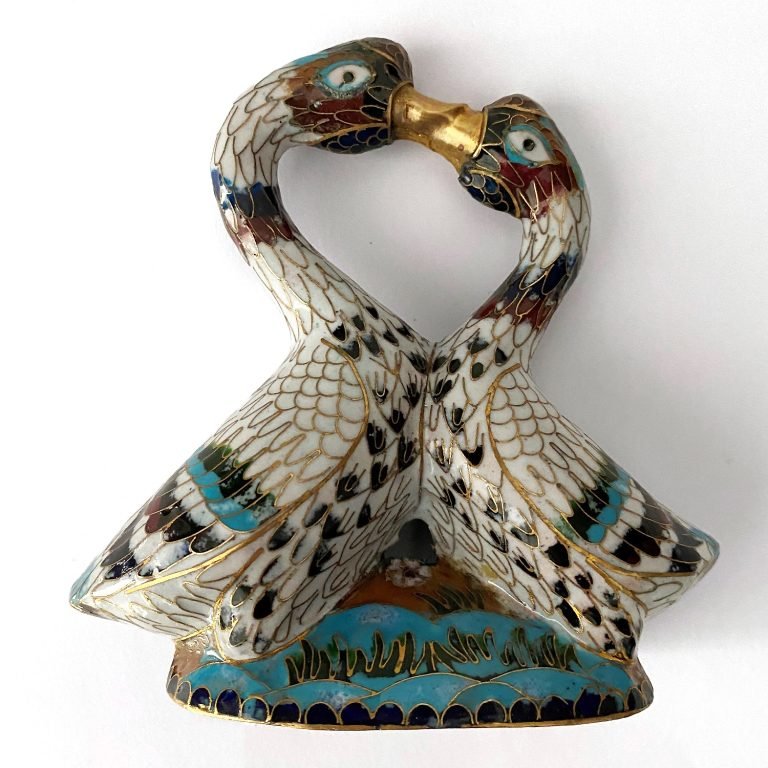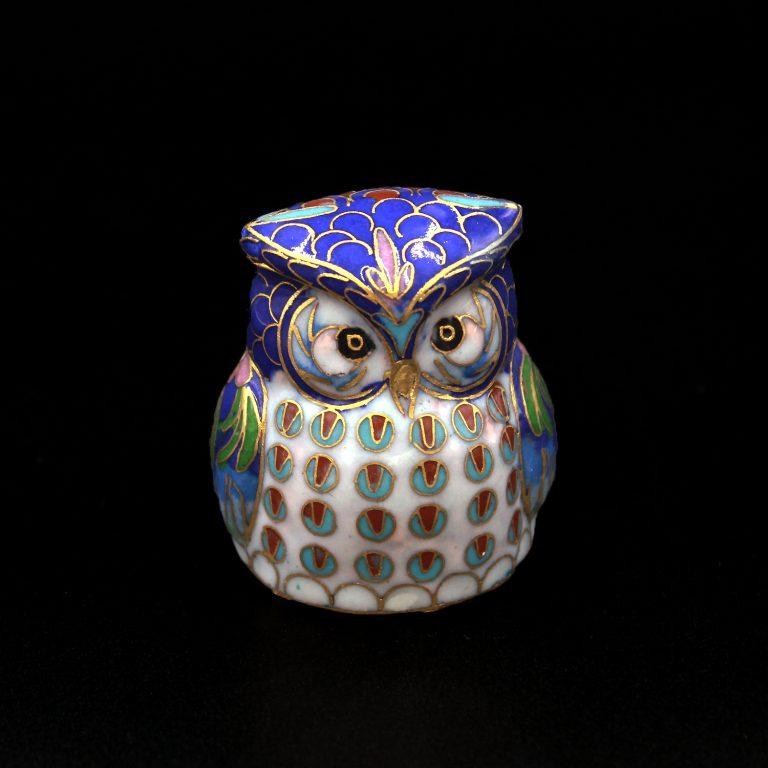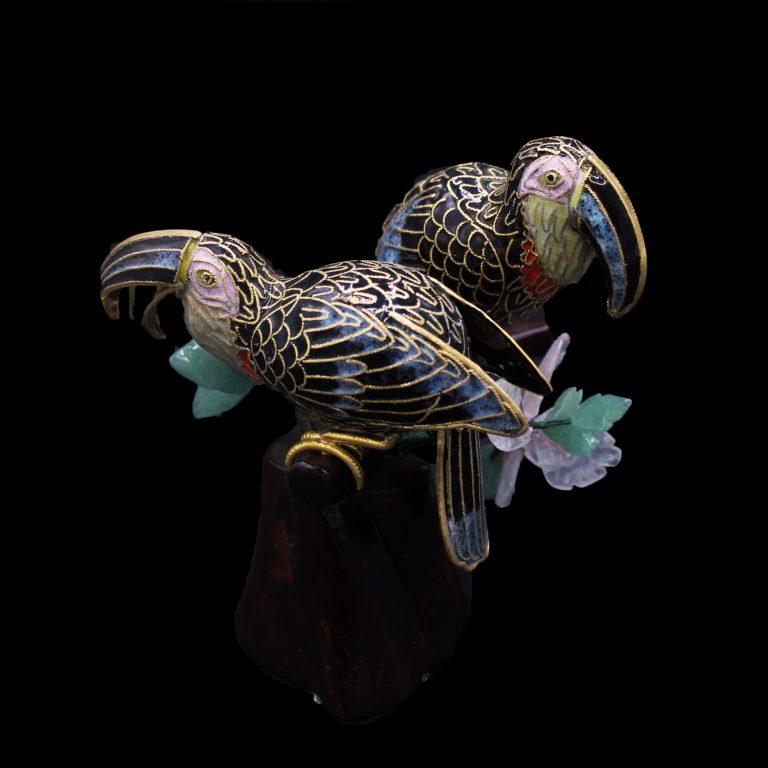description
Technical progress has also helped art develop, as cloisonné – beautifully combining Art with Technique – shows it well. The cloisonné technique has existed since Ancient Greece and spread throughout the whole European continent. In China, it developed during the Ming Dynasty, between 1368 and 1644.
technique
Cloisonné Making.
Cloisonné is the combination of metal and ceramic, with most different physicochemical properties.Heated to very high temperatures, the two components make up the cloisonné work. This requires a keen knowledge of all related characteristics, notably the melting temperature.
First, the artist meticulously applies copper or bronze wires into a precise pattern and motif(s) across the piece’s surface. Once those contours minutely drawn, they form cloisons or partitions which are then filled with variedly coloured ceramic. Lastly, the object is fired at the right temperature.
Firing Temperatures.
To get a high controlled temperature, artisans use huge chimney-stack kilns with significant air draught and firing temperatures up to over 1,000 °C (1,832 °F). There are numerous remains of those in China, the oldest dating back to the first century.Nevertheless, cloisonné pieces can also be fired in buried kilns – lit and fuelled for several weeks to reach temperatures equivalent to those in chimney-stack ones.
Our cloisonné pieces were mainly made in workshops located in North China, near coal mines where artisans get the needed fuel from.
Colours & Impurities.
At very high temperatures, the colours of cloisonné materials fade and tarnish.
In the olden days, as metals and ceramic were not pure, impurity bubbles were liable to form and burst, thus ruining the cloisonné work. Numerous failed attempts would then precede a successful cloisonné piece. Therefore, cloisonné items were very expensive. Thanks to Chinese expertise in porcelain making, the mastery of firing temperatures and colours in cloisonné making developed. Indeed, this art has been so exquisitely refined since the Ming Dynasty that it has become one of the five disciplines of Chinese traditional fine art.
Today, if temperature and purity are no longer a source of trouble, the disappearance of artistic cloisonné making, in itself, is. Meanwhile, ordinary, worthless painted ceramics are marketed so as to compete with genuine cloisonné pieces like ours.
Discover more...
We will be delighted to answer all your questions.
Visitez notre galerie
48, rue de la Maison Rouge
77185 – LOGNES
tél. : +33 (0)6 34 17 62 88
e-mail : contact@tresorient.art
Ouverture du lundi au vendredi de 9h à 12h et de 14h à 17h.
Pour nous rendre visite, merci de prendre un rendez-vous par téléphone ou par e-mail.

